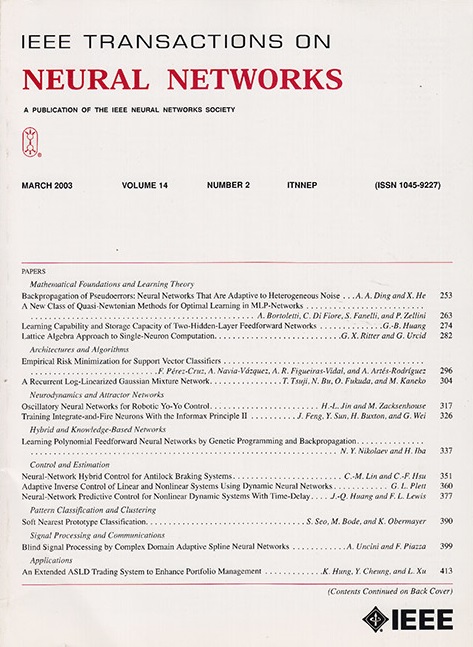Semisupervised Subspace Learning With Adaptive Pairwise Graph Embedding
IF 10.2
1区 计算机科学
Q1 COMPUTER SCIENCE, ARTIFICIAL INTELLIGENCE
IEEE transactions on neural networks and learning systems
Pub Date : 2023-09-18
DOI:10.1109/TNNLS.2023.3311789
引用次数: 0
Abstract
Graph-based semisupervised learning can explore the graph topology information behind the samples, becoming one of the most attractive research areas in machine learning in recent years. Nevertheless, existing graph-based methods also suffer from two shortcomings. On the one hand, the existing methods generate graphs in the original high-dimensional space, which are easily disturbed by noisy and redundancy features, resulting in low-quality constructed graphs that cannot accurately portray the relationships between data. On the other hand, most of the existing models are based on the Gaussian assumption, which cannot capture the local submanifold structure information of the data, thus reducing the discriminativeness of the learned low-dimensional representations. This article proposes a semisupervised subspace learning with adaptive pairwise graph embedding (APGE), which first builds a具有自适应成对图嵌入的半监督子空间学习。
基于图的半监督学习可以探索样本背后的图拓扑信息,成为近年来机器学习中最具吸引力的研究领域之一。然而,现有的基于图的方法也存在两个缺点。一方面,现有方法在原始高维空间中生成图,这些图容易受到噪声和冗余特征的干扰,导致构建的图质量低,无法准确描绘数据之间的关系。另一方面,现有的大多数模型都是基于高斯假设的,无法捕捉数据的局部子流形结构信息,从而降低了所学习的低维表示的判别性。本文提出了一种具有自适应成对图嵌入的半监督子空间学习(APGE),它首先在标记数据上建立一个k1-最近邻图来学习局部判别嵌入,以探索非高斯标记数据的内在结构,即子流形结构。然后,在所有样本上构造k2-最近邻图,并将其映射到GE学习中,以自适应地探索所有样本的全局结构。将未标记数据及其相应的标记邻居聚类到同一个子流形中,共享相同的标记信息,提高了嵌入数据的判别能力。并采用自适应邻域学习方法对连续优化子空间中的图结构进行学习,确保最终学习到最优图矩阵和投影矩阵,具有较强的鲁棒性。同时,将秩约束添加到所有样本的相似度矩阵的拉普拉斯矩阵中,使得所获得的相似度矩阵中的连通分量精确地等于样本中的类的数量,这使得图的结构更加清晰,并且近邻样本点之间的关系更加显式。最后,在几个合成和真实世界的数据集上进行的多次实验表明,该方法在探索局部结构和分类任务方面表现良好。
本文章由计算机程序翻译,如有差异,请以英文原文为准。
求助全文
约1分钟内获得全文
求助全文
来源期刊

IEEE transactions on neural networks and learning systems
COMPUTER SCIENCE, ARTIFICIAL INTELLIGENCE-COMPUTER SCIENCE, HARDWARE & ARCHITECTURE
CiteScore
23.80
自引率
9.60%
发文量
2102
审稿时长
3-8 weeks
期刊介绍:
The focus of IEEE Transactions on Neural Networks and Learning Systems is to present scholarly articles discussing the theory, design, and applications of neural networks as well as other learning systems. The journal primarily highlights technical and scientific research in this domain.
 求助内容:
求助内容: 应助结果提醒方式:
应助结果提醒方式:


